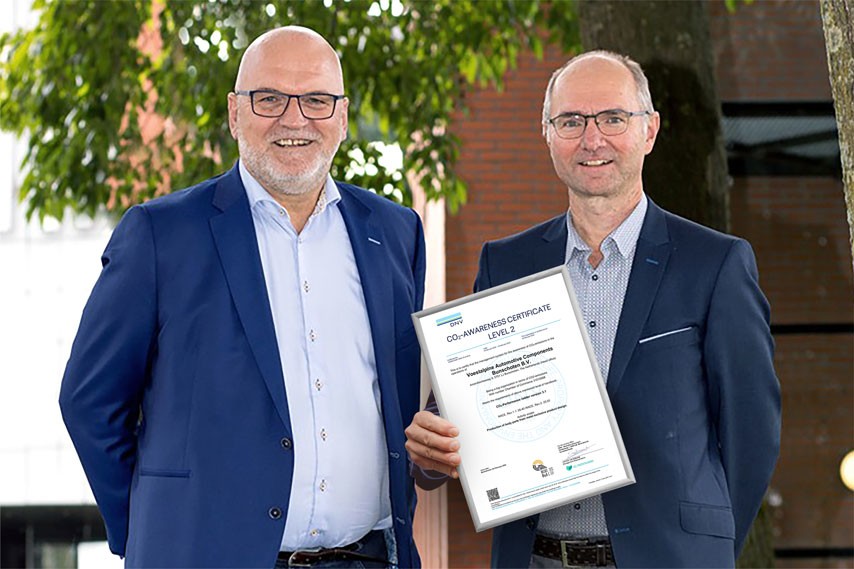Bunschoten achieves carbon footprint certification
At the voestalpine site in Bunschoten, the company is making rapid progress on the road to climate neutrality. With the certification of its CO2 balance, the Dutch team has created an important prerequisite for the further reduction of greenhouse gas emissions.
Reducing emissions in the spare parts sector
What motivated the Bunschoten-based voestalpine company to take this step is expressed by Quality Manager Bert Koelewijn: "For us, the focus is clearly on our responsibility as a company to preserve our world for future generations. We are also strengthening our position in the supply chain; premium customers are paying attention to our efforts on the road to CO2 neutrality or are already demanding clearly identifiable steps." The Bunschoten-based company meets these demands with Scope 1 and 2, Level 2 certification. Bert Koelewijn and his colleague Giel van Driel emphasize that in the future, the same sustainability and climate protection requirements will be placed on spare parts production as on new car production.

Clear objective.
For voestalpine Automotive Components Bunschoten, the target horizon is climate neutrality in 2035. Certification by DNV will further support the implementation of this ambitious goal. The entire team is highly committed - as well as to issues of saving energy and reducing emissions. Bunschoten was already a pioneer in terms of self-supply of electrical energy through PV systems on the plant roofs, with one of the largest systems in the Netherlands. "So we can already point to successes in terms of emissions balance, but until now we lacked the appropriate structure," Bert Koelewijn and his colleague Giel van Driel confirm of his company's approach. Even before certification, their team followed the "Masterclass CO2 Footprint" at the Biomimicry Centre Oosterbeek, an important building block for certification.
Certify for what?
Being certified is not synonymous with an immediate reduction in CO2 emissions. Rather, an external verification body confirms that there is a clear picture within the company of what quantities of the greenhouse gas are associated with production. The so-called greenhouse gas protocol (which also takes other climate-damaging gases into account) enables companies to obtain and report an overview of their greenhouse gas emissions. In this way, it helps identify approaches for further minimizing emissions. The Bunschoten-based company is taking advantage of a CO2 performance tier program offered by certification service provider DNV. For voestalpine Automotive Components Bunschoten, the Greenhouse Gas Protocol completes another stage on the road to climate neutrality. At the same time, it forms the basis for the next challenge: the Scope 1, 2 and 3, Level 5 certification program.
